Blog
I hope you find these enjoyable and full of information
April 2022 - Spring has sprung and with it comes new life - fertility reflexology
July 2022 - In the summer time, when the weather is fine - MASCED
August 2022 - The Power of Touch
November 2022 - Reflexology on the Road
March 2023 - Corporate Health and Wellbeing
Corporate Health and Wellbeing

Stress can hold employees back from staying focussed and fully productive at work with too much affecting wellbeing, relationships and leading to both presenteeism and absenteeism. Massage and reflexology has been proven to lower stress by reducing muscle tension, help relaxation, aid sleep, and promote a positive sense of wellbeing.
Whether it's part of a employee health and wellbeing programme, as an incentive, to revitalise staff, or reduce stress in the workplace, bringing in a holistic therapist to provide sessions can create a happier, healthier, more productive team.
Massage, whether seated or lying down, Indian head massage, or reflexology are all treatments I can offer in offices. Sessions can last from 20 minutes to an hour, with each employee completing a confidential consultation form ahead of their treatment to maximise their session time.
Healthcare cash plans, such as Medicash and Healthshield, can cover the costs of therapies with me, but please check with your provider first. I am happy to share my certificates for your provider to confirm.
If you are interested in finding out more, please get in touch with me by email at: laura@therakey.co.uk
Reflexology on the Road
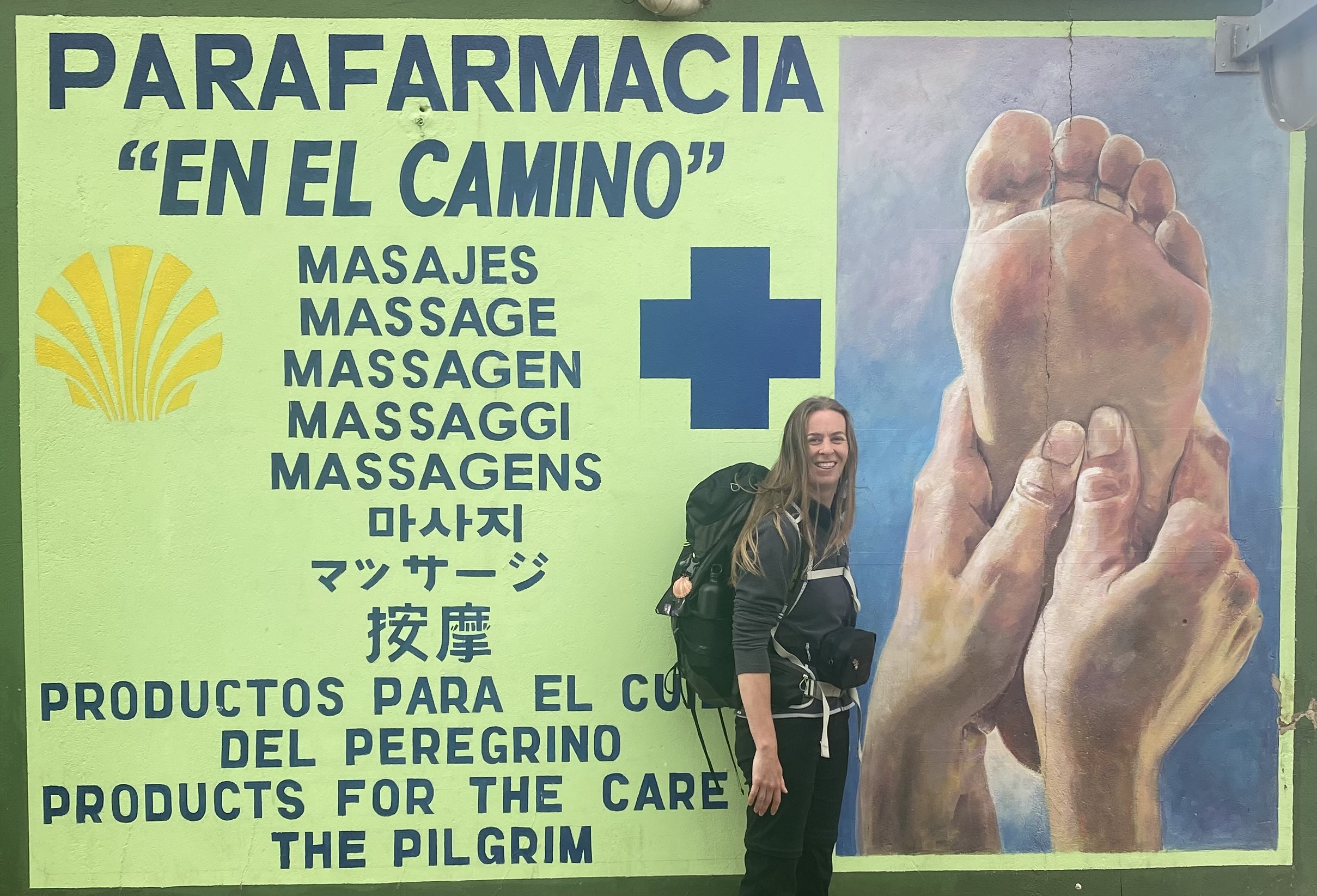
For the last couple of months I’ve been walking 1,000km on the road to Santiago in Spain from Saint-Jean-Pied-de-Port in France. I started on 14th September as a ‘solo’ hiker with 475 other people, but within half hour I had met walking companions.
Hiking over the Pyrenees to cross the border from France to Spain on that first day wasn’t easy, especially with a 10kg rucksack on my back. That first day was up extremely steep inclines, with sideways winds and lots of sheep wandering along the road wearing cow bells, go figure! At the end of that day my feet and calves were aching from the sheer climb and steep descent into the village. So as soon as I got to my bunk I was massaging my feet and working on my reflexes to relieve some of the pain. The girl I had been walking with also had sore shoulders from carrying her rucksack. I offered to give her a shoulder massage to help and she gratefully accepted. It was clear others had found it as tough as we had, and as soon as they saw me giving seated massage, they were asking if I could help them too.
It was a joy to be able to relieve some of the aches and pains for my fellow pilgrims giving them seated massage. I made a vow to help people along the Camino when I could see them in pain. The very next day I was sat in a small village by a river when I saw a girl hobbling along. I asked her what was wrong and it was her feet that were killing her. I invited her to sit down and gave her a session of reflexology. When she stood back up again, she was so relieved, walking almost normally again and wanted to pay me for the treatment. I never took payment or donations, just a promise to pay it forward - the Camino spirit.
I had a steady flow of people every day having reflexology or massage on their feet, calves, back and shoulders throughout the duration of my trip. I couldn’t tell you how many people had massages and reflexology over the 37 days I walked. But, I was glad to be of service and give a tiny bit of relief on an epic journey for so many people.
Overall it was an indescribable experience, but one I would recommend to anyone who has the opportunity to do it.
The Power of Touch
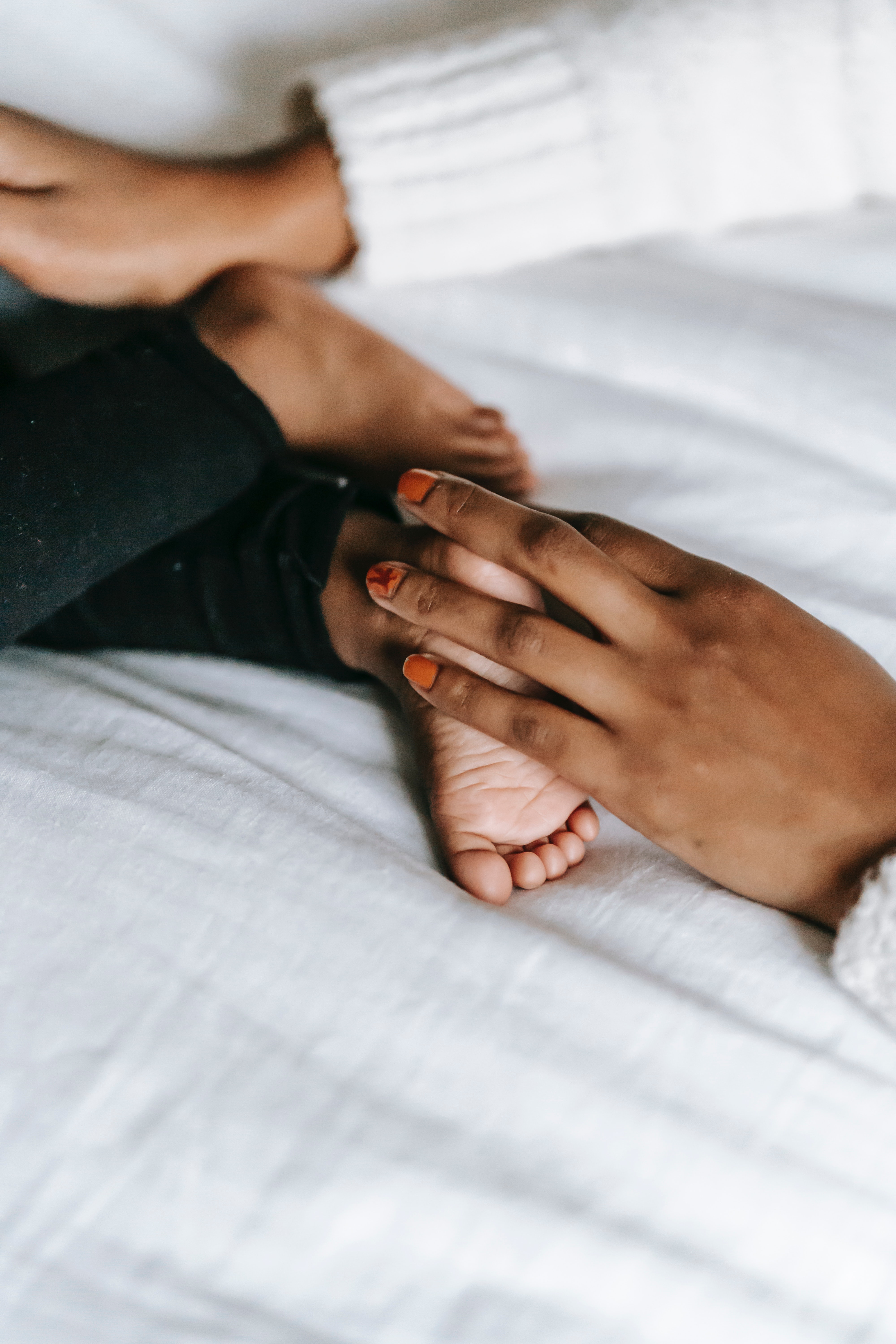
Why hands-on holistic therapies
Touch receptors are one of our first senses to develop and as we are always in contact with the world around us, our touch receptors are constantly sending messages to our brain 24/7.
Human touch is not something we always have time for in our daily lives but it can have such a profound impact on our bodies.
Touch can:
• slow down your heart rate
• lower your blood pressure
• reduce your cortisol hormone level
• raise your levels of natural killer cells in your immune system
All of which will reduce your stress level, improve your immunity, and increase your thrive state, which means a more positive health and wellbeing.
The more relaxed we are, the healthier we will be.
Spring has sprung and with it comes new life - fertility reflexology
"Nothing ever seems impossible in Spring" - L.M. Montgomery

What is going on in the world with fertility?
• Around 1 in 7 couples may have difficulty conceiving.
• About 84% of couples will conceive naturally within a year if they have regular unprotected sex every 2 or 3 days. But who wants to burn out their sex drive doing it for purpose rather than for fun.
• For couples who have been trying to conceive for more than 3 years without success, the likelihood of getting pregnant naturally within the next year is 1 in 4, or less.
• GPs will only start fertility checks after a year of trying to conceive. This is considered to be when infertility is “diagnosed”.
Studies show the average age of a woman getting pregnant in England and Wales is 30.
Scientists are associating age-related decrease in the number of eggs contained in the ovaries with fertility issues. I knew we were born with all our eggs, and these mature and then are released at ovulation. But what I didn’t realise is that although we may have a million eggs at birth, these decline to around 300,000 by the time we hit puberty, dropping again to around 25,000 by 37 and down to 1,000 by 51. This decrease is an unexplained natural degeneration to the point that we only have 300-400 eggs that can become a baby. Considering the age women, or girls, start their periods, and the frequency of them, going off my calculations I have potentially used 228 of my potential baby eggs. But, that isn’t the only cause of infertility. Life experiences, such as stress, exposure to radiation or toxic chemicals, even before birth, can determine the number of eggs we have in our ovaries.
Quantity isn’t the only factor in female fertility. As women age the quality of the chromosomes and DNA within the egg also declines. There is a certain amount of abnormality in eggs for most age ranges, a quarter in the 20s, 40% for women between 30-35,and this increases by 0.5% per month from then on. This doesn’t mean that a woman is infertile. It means that the egg released during ovulation may be less likely to implant or can cause very early miscarriage if it does implant, usually between 5-8 weeks.
It’s not all about the woman!
Male fertility has also declined by 50% in Western countries over the last 50 years, which could be down to lifestyle changes or additional stresses.
As with women and the quality of chromosomes declining with age, some studies show that male sperm quality starts declining from as early as in their 20s, with sperm mobility declining 0.7% every year, and more mutations in DNA as males get older too.
But could there be other environmental factors impacting on male fertility? If we think that the oral contraceptive pill was introduced in the early 1960s, and there is the age old joke that water has been through seven people, could any remaining female hormones from the contraceptive pill, having passed into the water system, be having an impact on men? I have yet to find any research into this but according to John McGregor, of South Eastern Water there may be some truth in the joke. John points out that “you can't make new water. You can basically say the water we drink today is the same water that the dinosaurs drank. So forget seven people - it's been through billions.” Therefore, what other chemicals could be impacting on both male and female fertility?
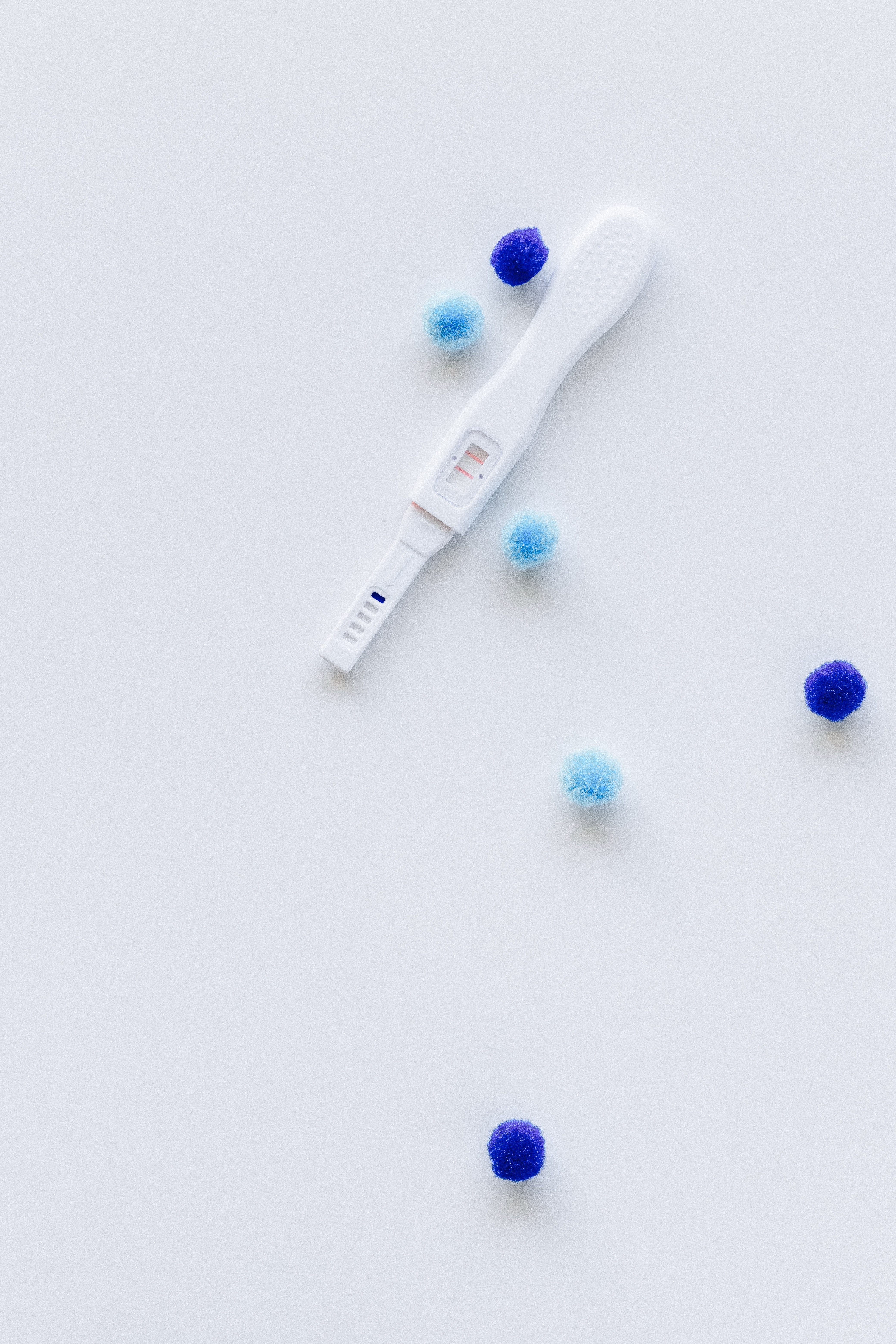
Although there may not be much we can do about water. Let’s look at what can be done to optimise health, physically, mentally and emotionally, to ensure ovulation, fertilisation and implantation, ready for a baby.
It’s time to reflect on lifestyle choices and see if you are in the best place for conception, physically.
- Have you checked any medication you're on is suitable for conception and fertility? If not, you may want to read those tiny encyclopaedias that come in the box. Still unsure? You can always ask your GP.
- Are you doing too much exercise? Believe me that is a thing! High impact exercise like running, going to the gym or cycling can effect males’ testosterone and sperm, and females menstrual cycles and ovulation.
- Are you making the best diet choices?
Although there is no definitive conclusion on the impact of caffeine on fertility for either males or females, caffeine is a stimulant and will increase activity in the brain and nervous system. There are various suggestions on how much caffeine to have daily for both men and women. Particularly for females, there are recommendations to have less than 100-200mg caffeinated drinks per day. But depending on where you get your caffeine may depend on how strong it is and therefore how many you can have. Definitely worth a quick google and start recording them in a diary so you can see whether there is a need to reduce or not. But if you do find, from your diary, that you are maybe taking on too much caffeine, start reducing this by a third each week for three weeks, and yes that includes chocolate! There can be as much as 20mg of caffeine in a 100g bar of milk chocolate, and this increases to 43mg in dark chocolate. There have also been studies to suggest that caffeine mixed with sugar has a greater impact than caffeine on its own. Therefore, it may be worth focusing on caffeinated soft drinks and energy drinks if these are part of your daily routine and reducing them over the course of 3 weeks.
Alcohol is a depressant, which slows down parts of the brain and nervous system. It can impact males by decreasing libido, lowering testosterone, FSH and LH and increasing oestrogen, all of which has an impact on reducing sperm production, including shrinking testes and increasing the chances of early or decreased ejaculation. It can also impact on the shape, size and movement of healthy sperm. For women, alcohol can interrupt the menstrual cycle and ovulation by changing the levels of testosterone, estradiol, LH and prolactin. If you don’t want to cut out alcohol completely try avoiding sulphites. These occur naturally in beer, and are found in wines and ciders to keep them fresher for longer. Alcohol doesn’t always say when it does include sulphites, so your best checking the label. But a good red wine is usually ok.
When it comes to smoking, do I need I say more than quit? Do I need to tell you about all the chemicals and toxins in cigarettes? Do I need to tell you how harmful they are to your body? Do I need to tell you about the increase risk in miscarriage, obstetric complications, uterus growth restriction? Do I need to tell you that smoking ages ovaries and depletes eggs prematurely? Remember, unlike men and sperm, women are born with all their eggs, women don’t produce more as you get older, they just mature and get released from the ovary. And the same goes for vaping, as the liquid still includes nicotine.
I’m not a nutritionist and cannot advise on what to eat and what supplements to take for conception, pregnancy and beyond. But you can check out the free health questionnaire to get additional support at: cytoplan.co.uk/
I’ve mentioned this before but it is important to get those 6-8 glasses of water per day. Water helps thicken up the lining of the uterus as well as shed the lining during menstruation.
Too much stress has a damaging effect on the body with the increase amount of cortisol coursing through the blood. For males that can be a reduction in testosterone release and erections, and for females can decrease ovulation and impair maturation of the uterus wall for egg implantation. Consider, what stress do you have in your life or when do you feel stressed? Where is that stress coming from? How can you reduce that stress? Who can you speak to about it?
We also need to consider the mind body link and the law of attraction. I am a big believer in this law as I, and one gynaecologist I was referred to back in the late 2000s, flagged that by me thinking about getting sick made it come true. Believe it or not, I used to worry about getting UTIs, and sure enough every time I worried about it, I got one! It took me about 10 years to stop that worry and I’ve not had a UTI since! This is the law of attraction at its finest. I visualised something and so it manifested. By making time for yourself to visualise finding out you are pregnant, the journey of being pregnant, and having a baby in the house, you will be attracting that positivity into your life and your future.
What is fertility reflexology?
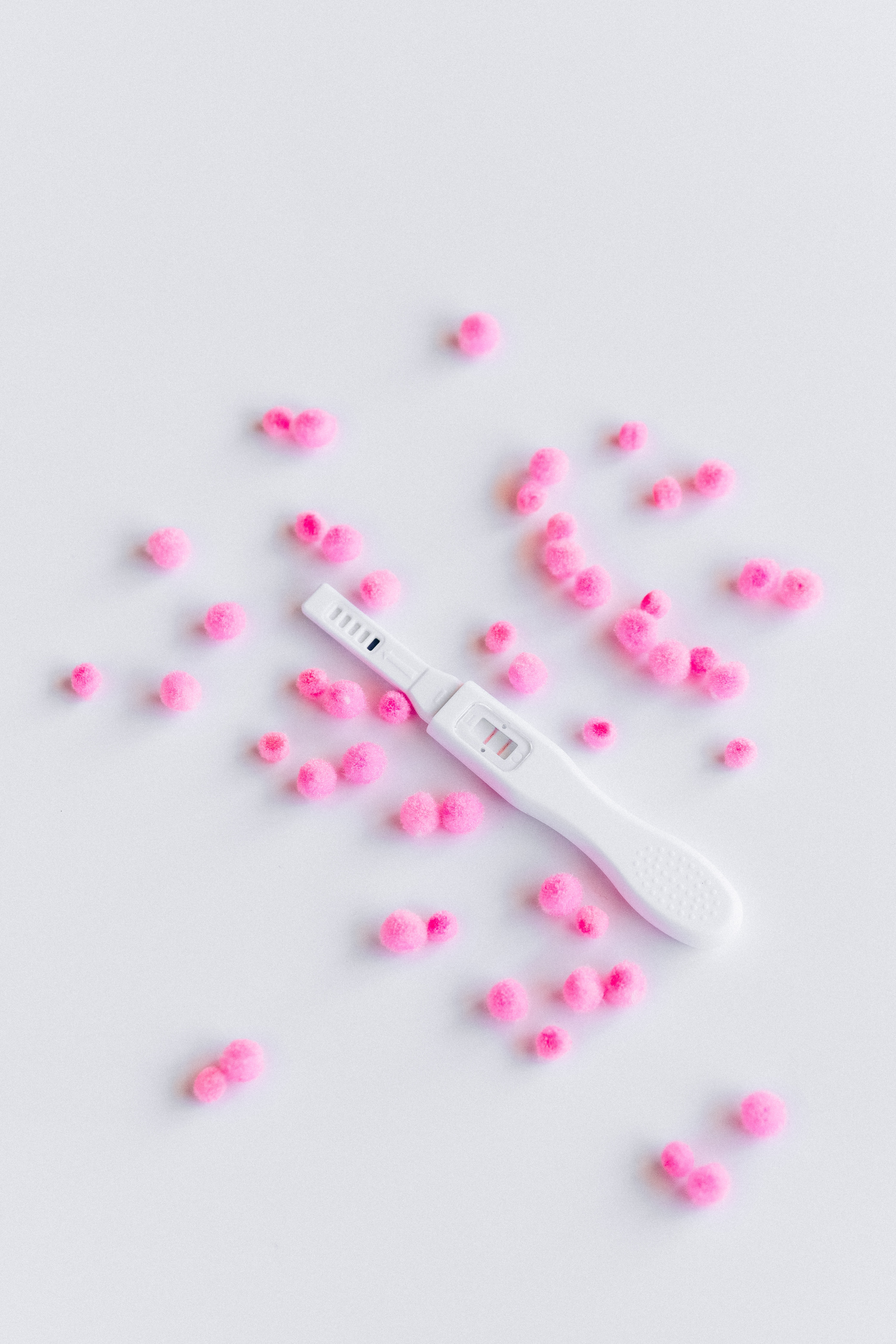
Fertility reflexology is designed to target specific reflex points on both females and males, that correspond to the reproductive organs and hormone producing organs, which are involved with reproduction and conception.
Fertility reflexology can help both partners to balance hormones, stimulate reproductive areas, remove toxins, reduce stress and increase the mind body link. For women we can work on regulating menstrual cycles, reduce PMS, and stimulating ovulation. The aim for both partners is to return to a natural balance that will be the ideal environment for conception to happen.
How can fertility reflexology help?
According to a small study by the Association of Reproductive Reflexologists, out of 180 clients receiving reproductive reflexology whilst trying to conceive, 100 women conceived naturally with an average of 11 treatments. Compared to data about assisted reproductive technologies, this study is very positive in reflexology’s favour. However, I must point out that the study by the ARR is not backed by “science”. Although there are many doctors and nurses out there who promote holistic therapies, there is still a stigma that unless it is scientifically proven then it is not real.
It takes 90 days for semen to mature, therefore if changes are started today, in 3 months time your sperm will see a benefit. After this time, if you wish to get a semen analysis test done, they can be booked privately, and please ask for a copy of your results, which we can then look at together.
It takes around one month for an egg to mature, so over the same 3 month period I would recommend making notes in your diary about your cycle dates, e.g. when it started and when it ended, or if there wasn’t a clear end; your basal temperature; and PMT symptoms.
I recommend both partners participate in the initial consultation so that we can discuss the points above about diet, exercise, and stress. Then depending on the results of the charting, the recommended treatment plan for women is weekly for the first couple of cycles, which will then reduce down to twice a cycle, pre and post ovulation. And for men I recommend weekly treatments for the first 90 days, which can then be reduced down to monthly.
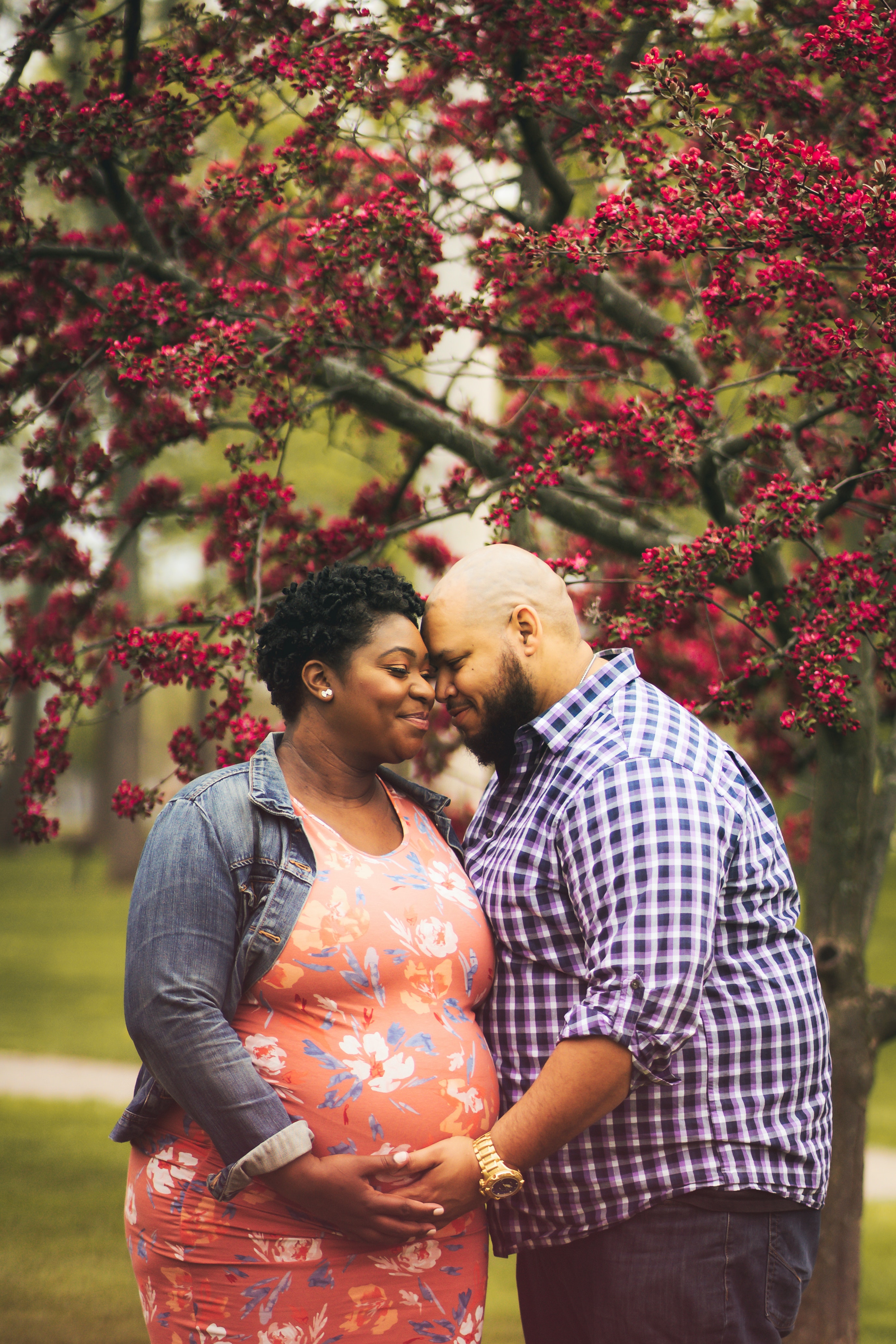
For those undergoing assisted conception, I would like to start working with you 3 months before starting any medical intervention to support with balancing hormones, regulating menstrual cycles, reducing stress. However I understand your may already have started your journey. So, wherever you find yourself, I’d love to help in any way I can. If you can bring along your protocol to the initial consultation this will help me to create an individualised treatment plan for you.
The main thing is to take each day and cycle as it comes knowing progress and change is being made.
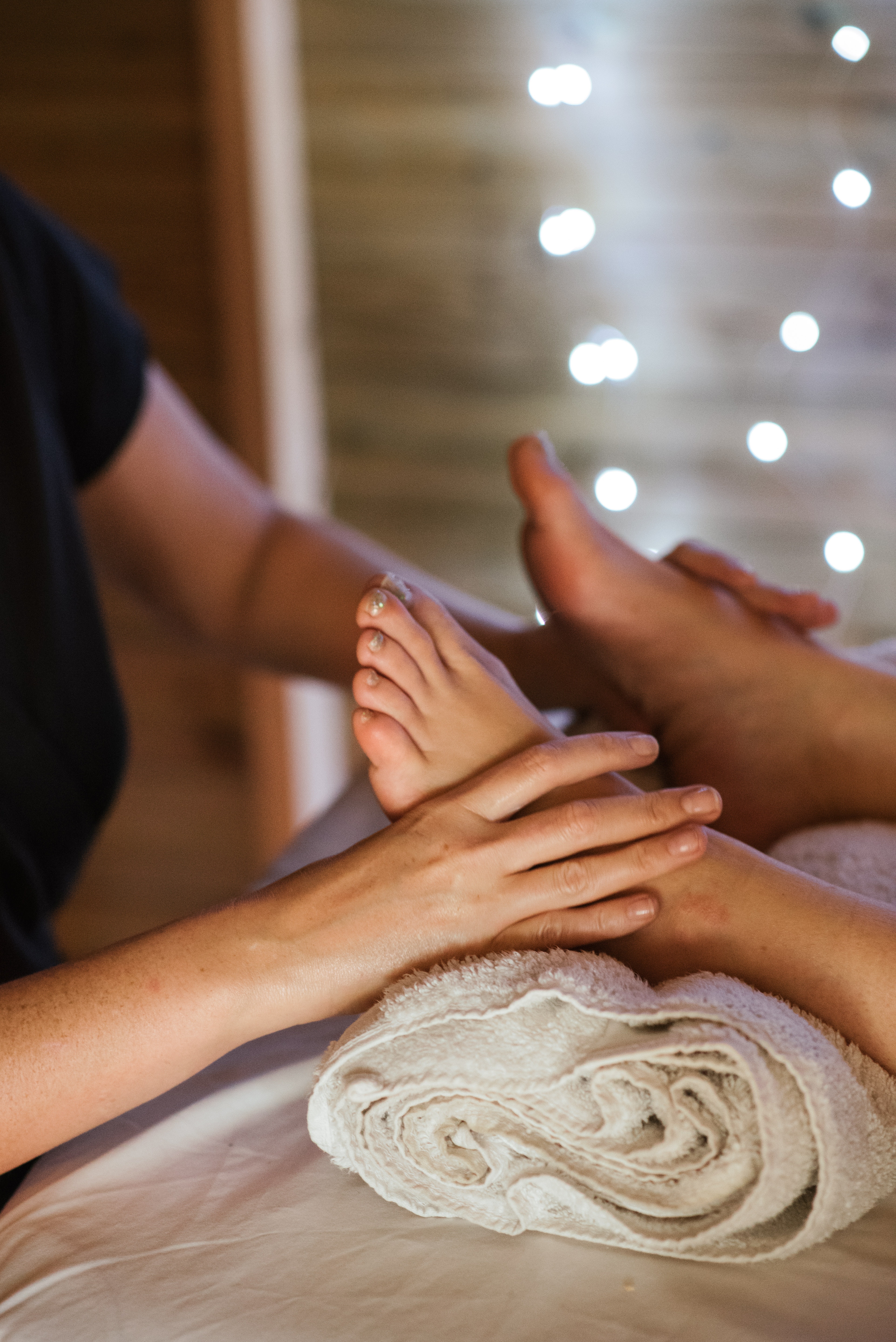
What next?
If you would like to discuss in more depth how reflexology can help, please contact me for a free 15 min telephone consultation.
Remember, reflexology is the perfect opportunity to relax, slow down, be still, and do something for your health and wellbeing. Slowing down and focusing on the present brings about mindfulness, and allows you to watch as thoughts and emotions come and go. This is important for everyone, and reflexology can help anyone to become more present.
Positive thoughts and love to you all x
In the summertime, when the weather is fine - MASCED
With longer days, more sunshine, and the summer holidays coming up, I want to reflect on the importance of SPF and highlight some information about preventable skin cancers.
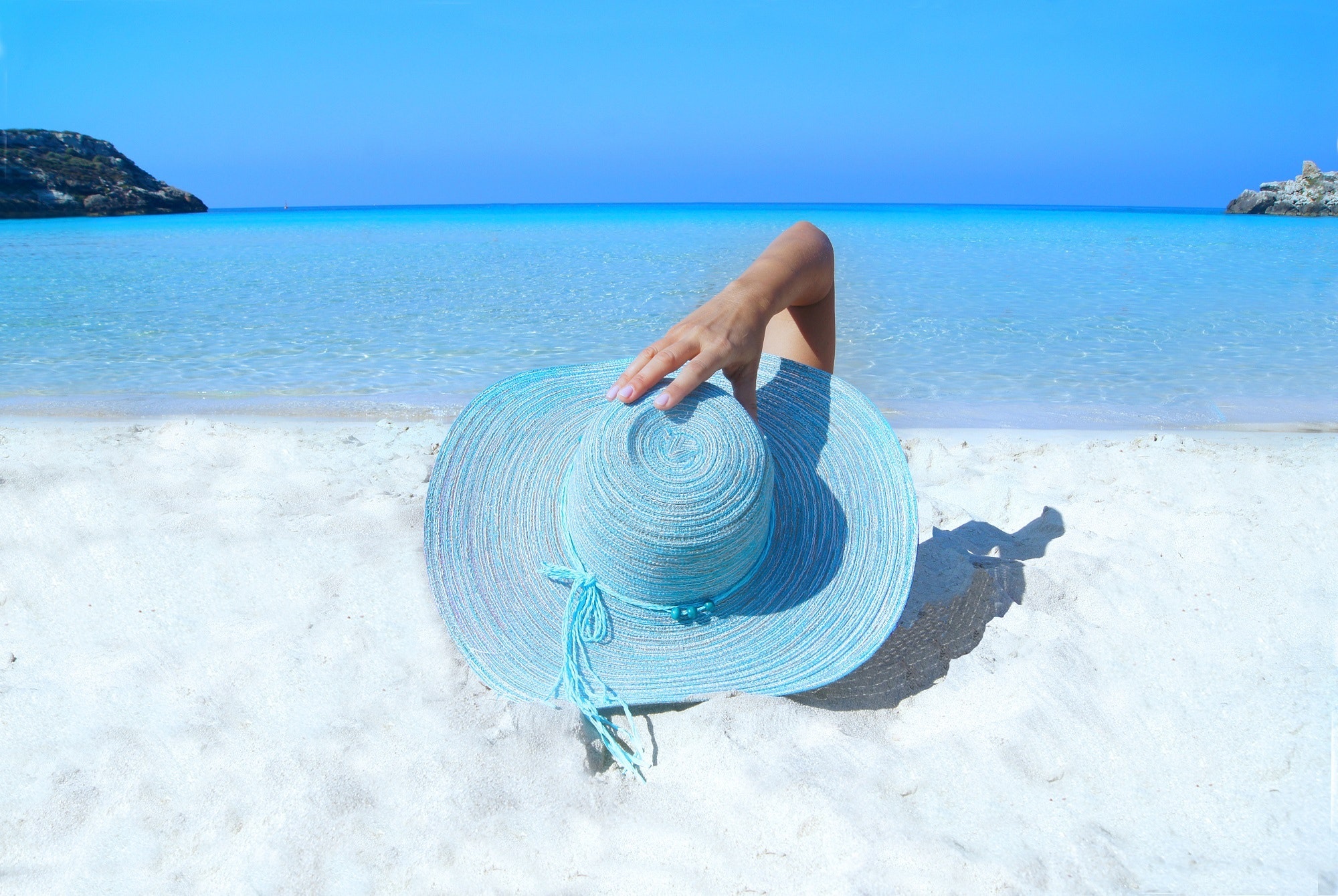
What is going on in the world of skin cancers?
The vast majority of skin cancers are preventable but the disease remains the UK’s most common and fastest rising cancer. Non-melanoma skin cancers are the most common type of skin cancer. These are generally easy to treat and cure.
Melanoma skin cancers occur significantly less often, but as much as 86% of melanoma skin cancers are preventable. So, I am mainly going to be talking about melanoma skin cancers in this blog.
Melanoma skin cancers are the most deadly form of the disease which can spread quickly to form new cancers. 1 in 36 men will be diagnosed with a malignant melanoma during their lifetime and 1 in 47 women. Melanoma skin cancers have increased by 45% in the last 10 years, reaching almost 44 diagnoses per day. It is vital that melanoma skin cancers are detected early to support with prognosis.
Melanoma can appear anywhere on the body, not just on the areas that are frequently exposed to UV rays. Melanoma is one of the biggest killing cancers in 15-34 year olds, but does not discriminate when it comes to age, gender or skin type. There are around 2,400 deaths per year from melanoma skin cancers. In Britain, this figure has risen faster than any other cancer. In fact, melanoma skin cancers kill more people in the UK than in Australia.
As mentioned, all skin types can be damaged by UV rays and everyone is at risk of developing the disease. However, there are some groups who are at a greater risk than others. These are those with fairer skin, sun bed users, active tan seekers, those with a history of sunburn especially in childhood or in the teenage years, outdoor workers, outdoor sports enthusiasts, those with more than 100 moles over the body, and those with a family history of skin cancers or melanoma.
Skin cancers are caused by the damage that over exposure to UV rays from the sun or sun beds give off. There are three types of UV rays; A, B and C. UVC gets blocked by the ozone layer, UVB burns the skin and is the main cause of sunburn and skin cancer, and UVA contributes to burning and skin cancer, and is also responsible for the skin ageing prematurely.
Damage from overexposure to UV rays includes sunburn, reddening of the skin, skin peeling, and tanning. When skin burns it releases chemicals that cause blood vessels to expand and leak fluid, which causes swelling, pain and redness. If there is no UV skin protection, then the rays can penetrate deeper into the skin’s layers causing damage to the cells deeper down. The damage is cumulative, permanent, irreparable, and increases with each exposure. So, even when the tan fades, the damage is done.
I have mentioned here that sun beds are damaging. This is because you get the same UV rays as you would from the sun, but in a much higher intensity. It can be as much as 10-15 times HIGHER than the midday sun in the MEDITERRANEAN. Sun beds are classed as a class 1 CARCINOGEN according to the IARC. Class 1 is the HIGHEST risk level for cancer.
But how can we prevent getting skin cancer, considering 86% of melanoma is preventable?
Prevention is better than cure
First to know, is that there is a UV index which can tell you what level it is each day. Low UV levels, which indicates a low risk of sun damage, is 0-2. When the UV index reaches 3 or higher then sun protection factors should be taken. The UV index goes as high as 11+, so you can see that on most days you will need some type of UV protection. You can check what the UV index is each day using a weather app on your phone.
But what can you do?
• Slip on protective clothing that will filter out UV rays, the closer the weave the more protection it will give
• Slop on in date suncream with UVA and B protection factor 30. Suncream acts as a barrier to the rays, making them bounce off the skin rather than penetrating the skin, reducing the likelihood of cell damage and sunburn. Don’t forget your lip balm should also have SPF too.
• Slap on a hat that puts the face, neck and ears in the shade
• Slide on sunglasses with UV protection in the lenses, look for the EPF figure
• Shade from the sun when it is highest, but make sure to combine this with other protective measures
But what about vitamin D?
Our bodies need vitamin D, which comes from UVB rays. So although we need to protect our skin, it is still important to be out in the sunshine. For vitamin D, our bodies need around 15-20 minutes in sunshine with a dose lower than what would cause sunburn, so 0-2 on the UV index. But remember each person’s Vitamin D levels are different based on how their bodies produce vitamin D in the skin. So, there are also other natural sources of vitamin D for people who have difficulty synthesising it. Some examples of these are: egg yolks, fatty fish, cod liver oil, fortified milk, cereals and juices.
Sunshine also helps regulate our circadian rhythms for sleep, which is another reason why it is important to be out in the sunshine so that our eyes can tell our body when it is day and when it is night.
I may have mentioned that 86% of melanoma skin cancer cases are preventable, but for those 14% let’s look at the signs and symptoms you can keep an eye out for, as early detection is vital for survival.
What are the early signs and symptoms of skin cancer that you can keep an eye on?
The sooner a skin cancer is identified and treated, the better a person’s chance of avoiding surgery, disfigurement or death.
• Asymmetry - does it look like a regular shape, or is one side different to the other?
• Border - does it have a defined border or is is irregular?
• Colour - is it one colour, is it changing colour, is it particularly red, blue or black?
• Diameter - is it bigger than 6mm?
• Evolving - is it changing size, colour, border or shape?
• Elevated - is it raised?
• Firm - is it firm to the touch?
• Growing - is it getting bigger?
MASCED qualification and what I can do to support your skin
I have completed my education in Melanoma and Skin Cancer with MASCED. Although I cannot diagnose, I may be able to see moles that you may not easily be able to see yourself, such as bottom of the feet for reflexology, your scalp when doing indian head massage, or on your back during body massage. I will also look at anything that may be under your nails, as long as they aren’t painted, as skin cancers can develop under the nails too.
If I notice something I may ask questions about it and recommend you see your GP to have it checked out by a professional. This is by no means a reason to worry. I have fair skin, been known to use a sun bed, actively sought a tan, have over 100 moles, have a history of childhood and adolescence sunburns and I regularly get moles checked myself. I have had some removed for testing, so I can relate to finding irregularities and the feelings that come with it. I can always take a photo of what I have seen so you can show that to your GP. And remember you can also ask your GP to see a Dermatologist if you feel you want a further assessment of your skin.
Remember non-melnoma skin cancers are more common, are easily treated and cured. 86% of melanoma skin cancers are preventable. And it is not just in the summer when we need to be taking measures to protect ourselves. Check the UV index and any day it is 3 or higher make sure to take those prevention measures to slip, slop, slap, slide and shade. Prevention is better than cure, and when you come for a treatment with me, I will review any moles and ask questions if I see anything from the ABCDE, EFG signs.
If you are looking for a fantastic range of broad-spectrum, water-resistant SPF that is formulated using certified reef-safe ingredients, so not only are you protecting your skin, but you are also protecting the coral reef, please let me know. I sell Tropic sun care products, which include a daily facial sunscreen that hydrates and protects, tinted sunscreen for a ready to go glow whilst giving protection, all over body sun creams and sun lotions in SPF 15, 30 and 50, and a cooling aftersun lotion just in case.
Have a wonderful and safe summer in the sunshine x